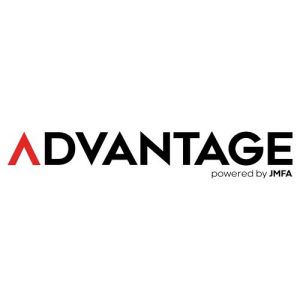Your core processor is the heart of your data management and function. Its efficacy directly impacts service quality, operational efficiency and regulatory compliance. Having the right core processor lays the foundation for a successful digital transformation journey — its choice calls for strategic consideration.
Digital Transformation Goals
Before selecting a core processor, it’s essential to identify your transformation goals, focusing on various aspects of operations, service delivery and growth.
- Enhancing Service Experience: Your customers expect seamless, fast and convenient services. Thus, one of the primary goals of digital transformation is often to streamline service delivery, enabling them to conduct transactions swiftly and effortlessly.
- Improving Operational Efficiency: Digital transformation can also automate routine tasks. By leveraging technologies like artificial intelligence and machine learning, your bank can automate various processes, improving speed, accuracy and efficiency.
- Bolstering Data Analytics Capabilities: With the surge in volume, variety and velocity of data, it’s crucial to upgrade their data analytics capabilities. Advanced data analytics can provide actionable insights, facilitate strategic decision-making and help in proactively identifying opportunities and threats.
- Ensuring Security and Compliance: Security threats and regulatory requirements pose significant challenges. Therefore, a key goal is typically to bolster cybersecurity measures and ensure compliance with the evolving regulatory landscape.
- Driving Business Growth: Ultimately, digital transformation aims to drive growth. By harnessing digital technologies, you can expand your customer base, launch innovative products and improve your market competitiveness.
Looking Beyond the Cost
While cost is undeniably a critical consideration, focusing solely on it often means that other crucial aspects of a core processor are overlooked. Scalability, integration capabilities, user-friendliness and vendor support are pivotal aspects that demand careful evaluation.
- Scalability: It’s vital to ensure your core can grow parallel to your future expansion. A scalable system can handle an increasing number of transactions and accommodate growth in your customer base without compromising speed or efficiency.
- Integration: The core processor should seamlessly integrate with existing systems and third-party applications, reducing operational silos while enhancing data flow and helping you to improve decision-making and service delivery.
- UX (User Experience): An intuitive interface with straightforward functionality ensures your employees can easily navigate and utilize it to its fullest potential. This user-friendly nature can significantly boost operational efficiency.
- Vendor Support: Robust vendor support is essential for smooth implementation and ongoing maintenance of the core processor. It guarantees timely troubleshooting and regular system updates, helping you maintain optimal performance and stay abreast of advancements in technology.
Migration and Implementation
Choosing the core processor is just the first step. Migrating to the new system entails meticulous planning, coordination and execution to minimize disruption. Implementation should be treated as an ongoing process, with regular assessments and adjustments to ensure the system optimally serves your organization’s needs.
- Project Scope: The first step is to outline the steps necessary for migration and identify potential hurdles. The plan should include a timeline for completion to manage expectations and ensure progress is trackable.
- Project Management: A dedicated project manager (PM) with experience in similar implementations should lead the project. The PM’s role is to oversee all aspects of the implementation, from coordinating resources and managing vendor relationships to resolving any issues that arise during the transition period.
- Team Preparation: A comprehensive approach to staff training before implementation will help to ensure a smooth transition. Training on how to use the new system and what to do when they have a problem will boost their confidence and help them acclimate to new processes.
- Risk Management: It’s imperative to have clear communication for both your customers and staff, with contingency planning for potential challenges, such as system downtime, data loss or resistance from staff. By anticipating these obstacles, the project team can develop strategies to mitigate risks and ensure the project stays on track.
- Analysis and Ongoing Evaluation: Regular checkpoints, key performance indicators and project milestones help to ensure the system is functioning as expected to meet your requirements. Any adjustments or tweaks can be made during these evaluations to optimize system utility and efficiency further. This iterative approach helps to ensure that the implementation is successful and achieves its intended goals.
Embracing Change
Digital transformation is not just about technology. It’s about embracing change at all levels of the organization and fostering a culture of continuous improvement.
Your core processor is the backbone of all future digital initiatives, enabling your bank to operate more efficiently, serve customers better and stay competitive in the digital age. By identifying your strategic goals, selecting the right vendor, looking beyond costs and meticulously managing migration and implementation, you can unlock the full potential of your core processor. The journey may be complex, but the rewards of a successful digital transformation will lead to greater operational efficiencies, enhanced service delivery, and sustained competitiveness, making it well worth the effort.
To learn more about modernizing your digital offerings, creating a successful digital transformation plan or how to initiate an evaluation, contact the experts at ADVANTAGE at advantage-fi.com/contact-us to get started.
Kelly Flynn serves as national sales director for ADVANTAGE, powered by JMFA, a trusted consulting partner helping community banks improve their digital capabilities with a strategic approach to digital transformation, enabling them to stay competitive and grow market share. The ADVANTAGE team assesses, evaluates and facilitates the selection of critical technologies and secures the most favorable terms and pricing in complex contracts to ensure banks receive the best value from their vendors. Visit advantage-fi.com.







